It might seem like having pain or injury would hold you back in your yoga practice, but it’s actually a way to take your practice to new depths.
I’ve been getting this intense pain in my left shoulder that has come and gone over the years.When it starts to feel better, I return to my normal practice, but then the pain comes back even worse. It’s especially bad in the mornings!
I love challenging myself deeper in postures, so this was a struggle for me. I wanted to ignore it, and just push through the pain, but I decided to modify my yoga practice so that I could finally heal.
Old Monica would have pushed through the pain. I’m finally putting my ego in its place!
There’s a difference between pain and discomfort. When you feel sharp and shooting pain – that’s an indicator to stop. When something feels sore, tight, or just a little uncomfortable, then it’s okay to breathe through it slowly.
You have to make the judgement call. It’s your choice on how your interpret the pain and move forward, but a good rule of thumb is if it doesn’t feel right, or you’re not sure – then don’t do it.
This pain felt like bad news bears, so I took it easy.
Pain should never be self inflicted.
The yoga sutra 2.16 (Heyam Durham anagram) means all future known suffering should be avoided, so if you know you’re creating pain, then you’re not doing yoga.
Here’s what you should be focusing on when practicing with pain or injury:
- Breath: Rather than focusing on going into advanced postures, focus on deepening and lengthening your breath. See if you can slow it down.
- Body Awareness: Once you get your breath steady, take the time to feel what’s going on in the injured area, but also the areas around it. Where is the pain coming from? What can you soften or stretch to help the pain heal?
- Mind Awareness: When your mind wanders away, where does it go? How are you talking to yourself? Bring it back to your breath each time letting those thoughts pass over you.
- Mange Your Pain: If it’s too painful to even breathe for a short period of time in a modified version of this posture, then do this in meditation posture, or even laying down. Get to a comfortable position, and breathe deep. Then, focus on the area of pain even if you can’t feel it so deep. Try to feel any difference in sensation. Move around a little. See how your feelings change. Just focus on the area little by little, and try to understand your pain and where it’s coming from.
Here’s how I’ve been modifying with my shoulder injury:
Chatauranga:
I’m not jumping at all in Surya Namaskara, but I’m lowering to my knees in Chaturanga every time. I really focus on pulling my belly button to my spine, engaging my core, firming my legs, and lowering down with control. Focusing on distributing the weight evenly helps me to strengthen the areas around my shoulders, so the pressure is way less on the way down.
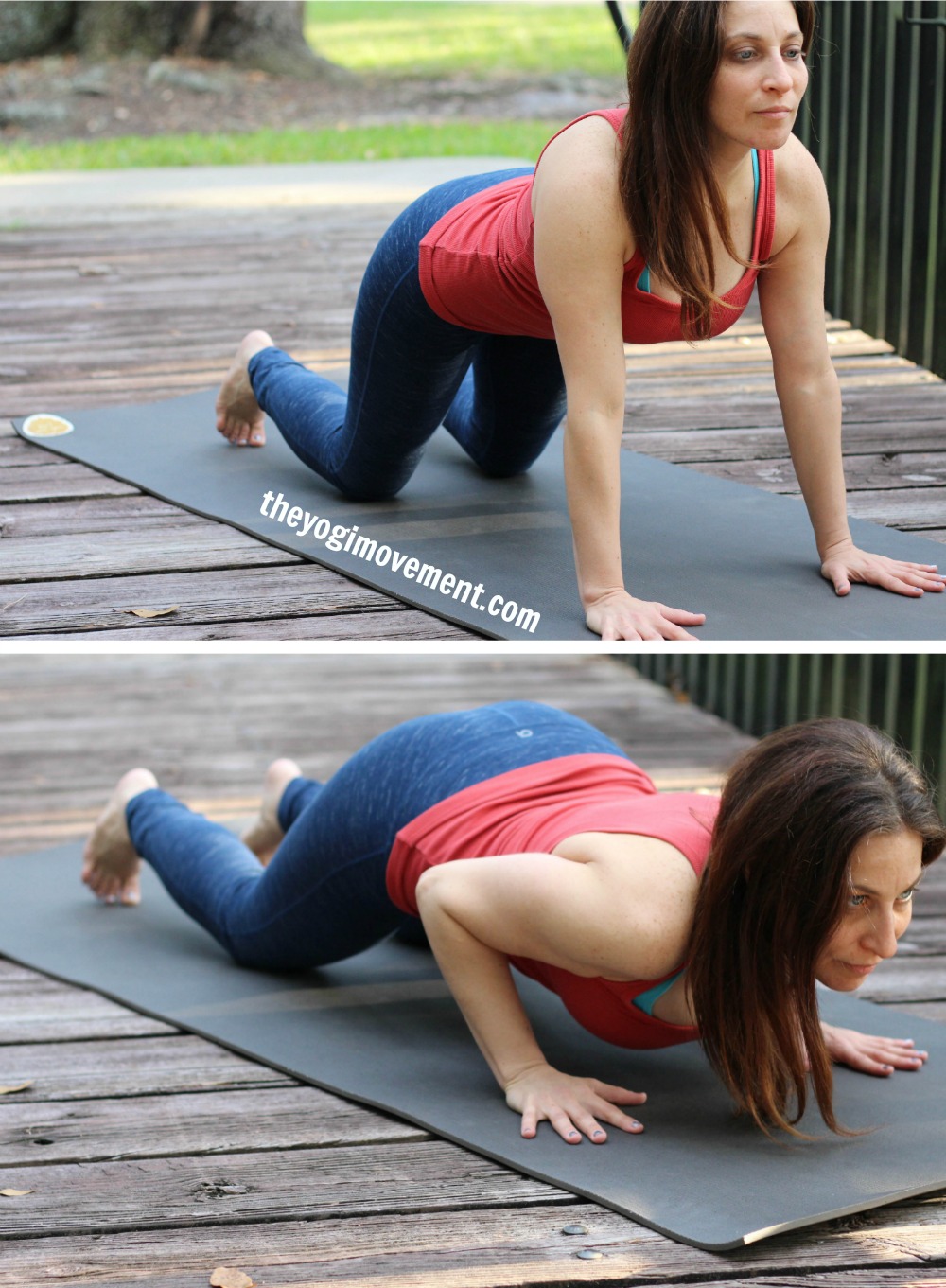
Marichyasana A:
This posture really tested my shoulder. I could come into it really slow if I wanted. It was too painful to wrap my arm around my leg in a normal motion. What’s the point? If it’s painful, that’s a sign to modify. Instead I just took a different shape of the posture. I skipped Marichyasana B and just did Marichyasana A again to fill the space.
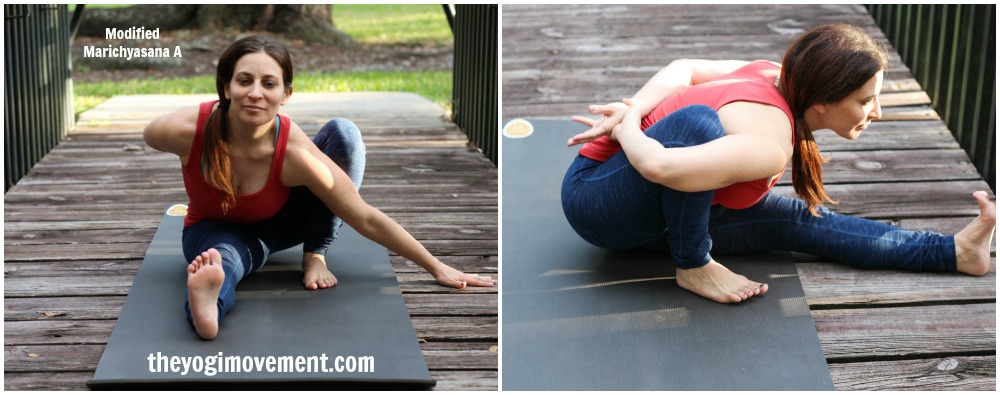
Marichyasana C:
I did the same thing for Marichyasana C that I did for Marichyasana A. I just took the shape to the form that felt the best on my shoulder, breathed deep, and took the posture. You also have the option of hugging the knee if hooking your shoulder is too much. Again, I skipped D and repeated C.
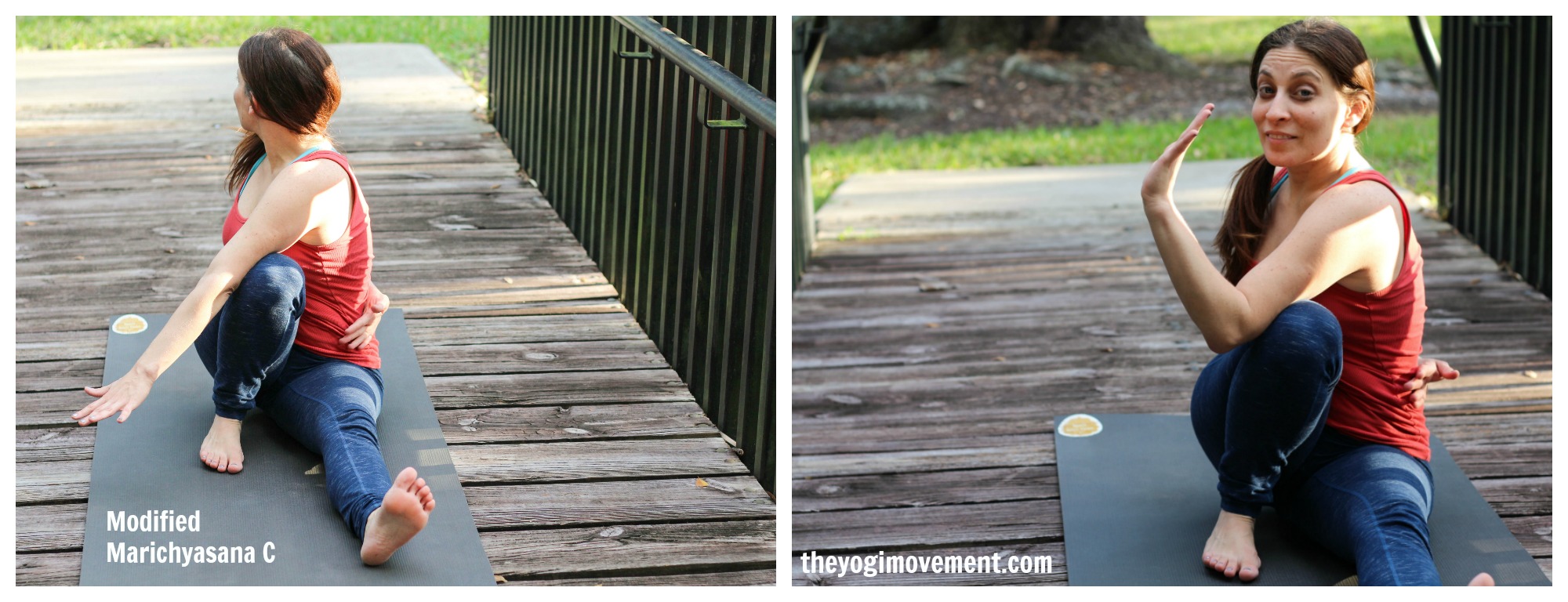
Bhujapidasana:
I didn’t do any arm balancing in this posture. I did a yogi squat instead, and then experimented with pressing my arms into my legs to open the hips. I used this as a time to focus on opening up and building strength.
Kurmasana:
This is a posture that could really irritate your shoulder pain since you’re pressing your arms hard into your legs. Instead I made sure to bend my knees over my arms, so I was still getting the hip opening, and pressing my chest forward while keeping my shoulder safe! I skipped Supta Kurmasana because that would have pressed right on my shoulder, and just held Kurmasana another 5 breaths.
Urdhva Dhanurasana:
I opted for bridge instead of backbend.
Utplutih:
Instead of lifting up off the ground into Utplutih, I just decided to focus on using my core to lift my legs. I also decided to lift my arms like in Navasana, and pull my legs more into my chest. This is basically the same movement except I’m not off the ground. The more compact you can make yourself without holding on, the more you’re using your bandhas, and you’ll become stronger in your center.
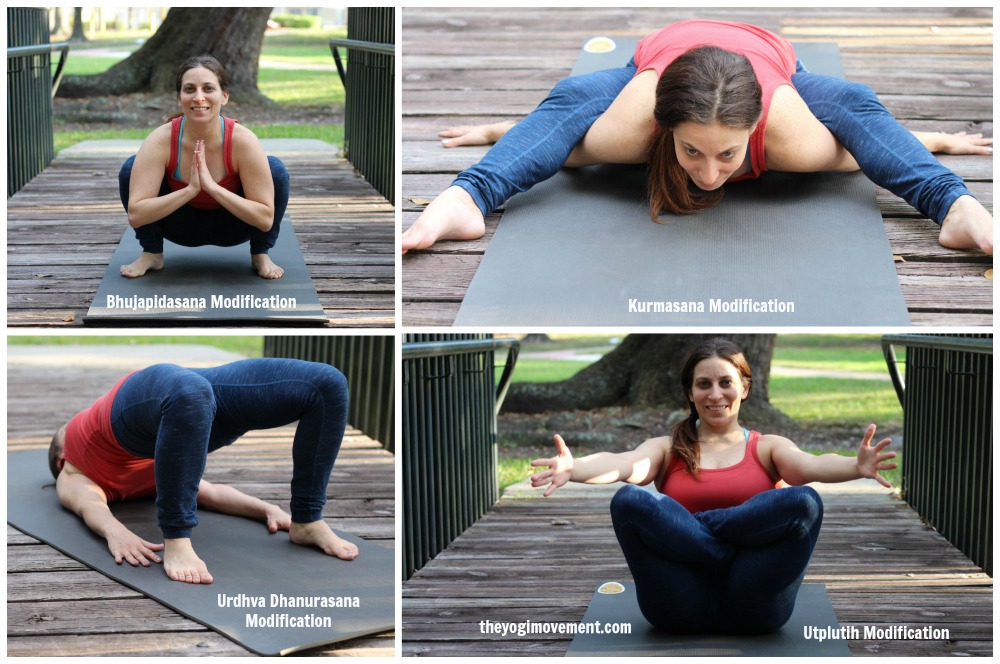
My shoulder has been feeling better and better everyday, and I think it’s because I’m being kind to myself, and have some more body awareness to soften and let go. Of course, you’ll have to judge how bad your shoulder feels, and perhaps you’ll need to modify more or less.
What pain or injury have you experienced with your practice (Ashtanga or not), and what have you done differently?

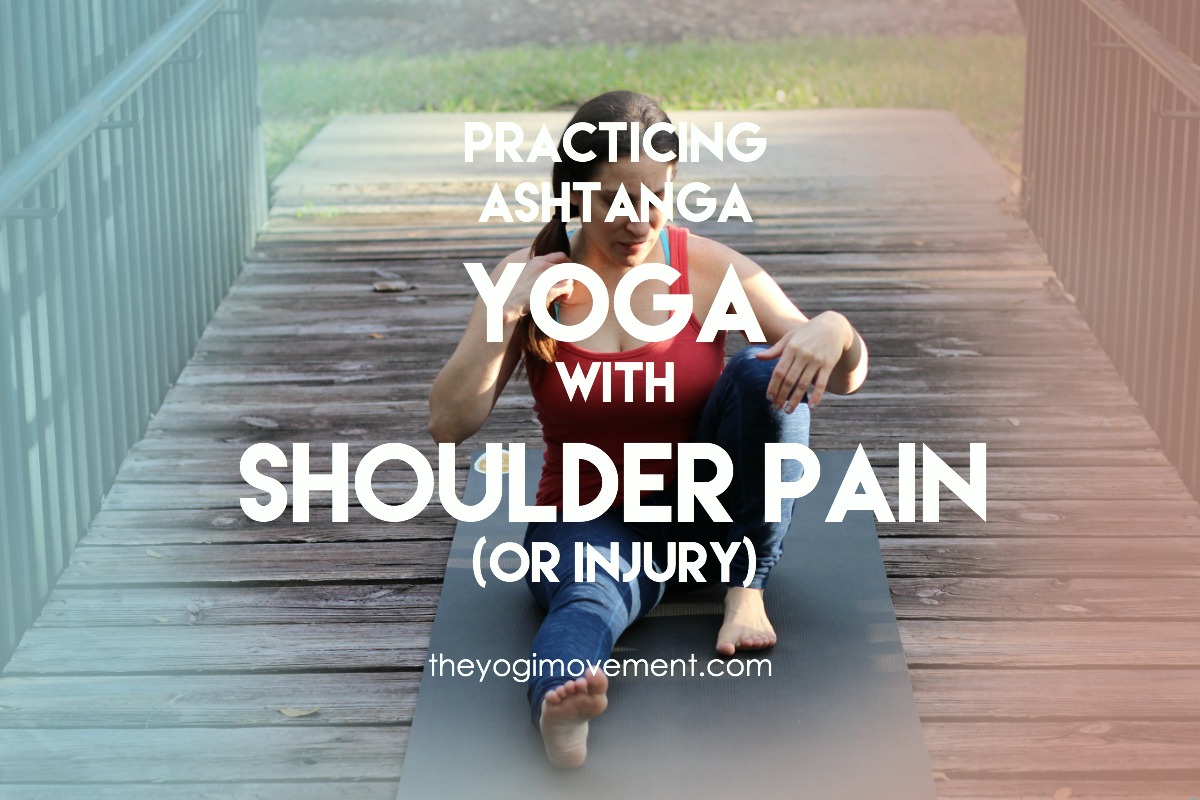
Thank you for sharing your experience with dealing with shoulder pain! Having done Ashtanga on and off, I just started Mysore practice a week ago, while dealing with shoulder stuff. Not being able to do all poses the way I would ‘normally’ do them has been frustrating, but reading your article is, apart from being really helpful, a great reminder that there is nothing wrong with adapting your practice to your needs!Thank you!
Hi Evi! I’m so glad you enjoyed the post. I totally understand where you’re coming from. It’s taken me years to open my mind to adapting my practice after coming from such a strict school of practice. You’re awesome 🙂
Thanks a lot for this! Been struggling with my right shoulder and was looking for more adjustment ideas – it turns out i’ve been doing the same as you for most of them. Chaturanga and utplutih variations as you suggest will be additions to my next practice…
Hi Anne! I’m sorry you’ve been having shoulder pain. Just keep modifying until the pain goes away. Let me know if these modifications help!